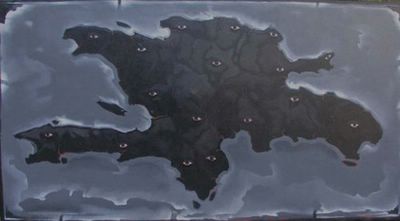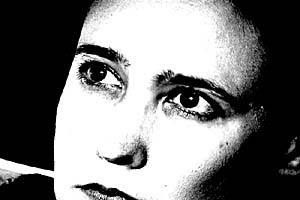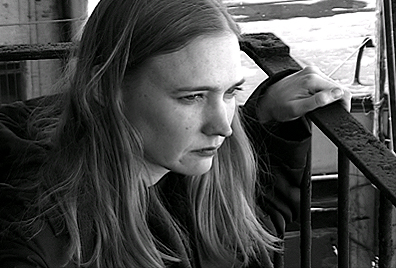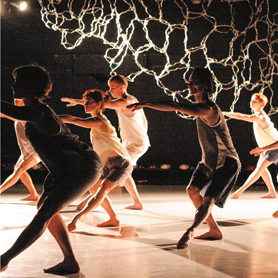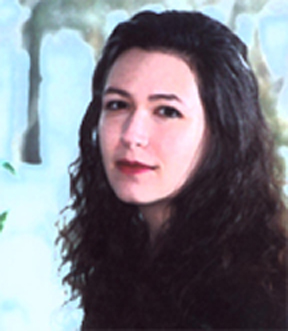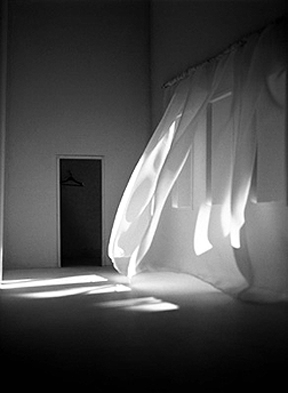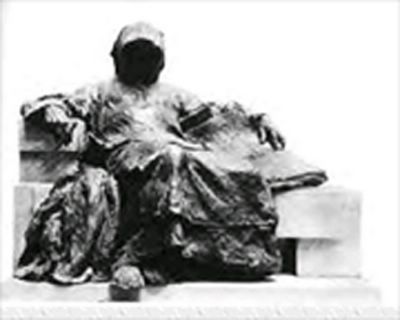
TRAVEL
Budapest for Pestistentialists
Budapest is a strange blend of ornate, picturesque architecture, and bland Soviet-era housing flats.
Sprawling on both sides of the Danube River and featuring both the rolling hills of Buda (west bank) and the organized, gridlike layout of Pest (east bank), these two very different cities united by convenience into one city offer the traveller a Viennese-style aura at half the price.
BUDA: HISTORY + SIGHTEEING
Buda is located on the west side of the Danube; the area includes Castle Hill and the bulk of Budapest's attractions.
Go there: Only metro line 2 (red) crosses the Danube to the Buda side. Moskva tér, the penultimate stop, makes a fairly convenient entry point to the Castle District from the north.
Castle Hill: Castle Hill was first settled in the thirteenth century, after a Mongol attack led Buda's citizens to seek a more easily defended neighborhood. The royal Hungarian court also decided to move, to the southern end of the hill.
By the fourteenth century, there were an estimated 8,000 residents in Buda. After a long (1541-1686) period of Turkish rule, a 75-day siege left Buda in ruins, and Austrian authorities counted a mere 300 people left.
This would not be the last heavy attack on Castle Hill: in 1849 and 1945 the Baroquified area once more came under attack. A completely surrounded German force held out here for almost a month in 1945.
The Royal Palace: Probably the most popular attraction on Castle Hill is, of course, the Royal Palace (Várpalota). Strangely, it’s never actually been occupied by the Hungarian royal family, and is more of a pseudo-historical mishmash, like the Mátyás-templom.
The first palace, in Gothic style, was built and added onto over 300 years. It was destroyed during the struggle for liberation of Buda from the Turkish occupation in 1686. In 1715, work started on a completely new, smaller Baroque palace.
Reconstruction after the various indignities suffered during rebellions of the nineteenth century finished in 1904. This reconstruction, by Miklós Ybl and Alajos Hauszmann, was undone by German troops holding out at the end of WWII. The roof caved in completely, and had to be rebuilt. Today the building houses three large museums and the National Széchényi Library.
St. Stephen (István) Cathedral: Though often called "the basilica" for short, due to its clerical rank as a basilica minor, it actually is shaped like a Greek cross, with two steeples and a dome on top.
The foremost Hungarian artists of the day designed the artworks within St Stephen's, among them Bertalan Székely, Gyula Benczúr and two men also known for their work in the Opera, Mór Than and Alajos Stróbl. The mosaics were designed in Budapest, but constructed in Venice.
A famous site on Castle Hill for students is the statue of Hussar general András Hadik, a favorite of Empress Maria Theresia. The statue was designed by György Vastagh Jr. and unveiled to the public in 1937. The general is on horseback; take a closer look at the horse's testicles. They are shiny yellow, unlike the patina on the rest of the statue. Engineering students have for years polished the horse testicles on the morning of difficult exams, supposedly for luck.
Mary Magdalene Tower: On the corner of Országház utca and Kapisztrán tér is the Mary Magdalene Tower (Mária Magdolna torony), part of a 13th-century Franciscan church used by Hungarian speakers. Under Turkish rule, this was the only church allowed to remain Christian: all others were converted into mosques.
Vienna Gate: At the northern end of Castle Hill is the Vienna Gate (Bécsi Kapu). This was the market for non-Jewish merchants in the Middle Ages, and is where all four streets that run the length of the hill converge. The Vienna Gate inspired a typical Hungarian parental retort for children who talk back: "Your mouth is as big as the Vienna Gate."

Shown above: Statue, the "twig lady"
At Úri utca 9, there is the entrance to an underground labyrinth, which stretches under Castle Hill. The caves were joined together by the Turks for military use. Today, there is a official tour that takes visitors through a section about 1.5 kilometers long. Unofficial ‘tourists’ are on their own...
Fisherman's Bastion (Halászbástya): This is the large white tower and lookout terrace complex you see hanging over the side of Castle Hill beneath the Matyas Church. It was built between 1890-1905, and is named after both the medieval fishmarket once nearby and the Guild of Fishermen who defended this section of the wall during past wars.
The seven towers represent the seven Magyar (Hungarian) tribes. Each of the chiefs has his own statue, and the steps leading down to the city are dotted with statues of mythical figures or scenes, such as St. George and the Dragon.
PEST: HISTORY + SIGHTSEEING
The east side of the Danube, covering the modern commercial core of the city (Districts V-IX).
Go there: The metro network does a pretty good job of covering the Pest side of the river, with all three lines meeting up at Deák Ferenc tér in the center of the city. The trams running along the east bank fill in a useful gap.
Buda's City Park (Városliget) is the most pleasant of districts and houses a number of interesting if low-key attractions. The area is easily accessible with the yellow subway line (nearest station M1 Hősök tere) and entry into the park, including the castle grounds, is free.
Vajdahunyad Castle (Vajdahunyad vára): Loosely modelled after a Transylvanian fortress of the same name; the building is not really a castle at all: it's a large-scale model built for Hungary's 1896 millenial celebrations.
The structure has three distinct wings, one Gothic, one Romanesque and one Baroque, making it quite a bizarre sight when seen from a distance. But sneak up closer and its magic will be revealed: a moat, and the charming grounds hemmed by trees and footpaths.
The attention to detail has been painstaking, so it's like seeing three extraordinarily pretty castles rolled into one. Located on an island in the middle of the park's lake.
Hungarian Agricultural Museum: Housed in Vajdahunyad Castle's baroque wing, this is the only part open to the public and it now houses the exhibits on rather dull topics like cattle breeding and fishing. But the cheapish entry ticket makes it worth seeing just for the architecture.
Ják Chapel (Jáki kápolna): Another creatively borrowed building, this time based on the Abbey Church of Ják in Western Transdanubia. The outstanding part of the chapel is the portal around the doorway, an amazingly ornate multilayered sculpture of geometric patterns, apostles and lions.

Shown above: View of Pest
Anonymous: Next to the chapel is the statue of Anonymous, a hooded monk representing the unknown historian who recorded the annals of the early Magyars in the time of the mighty King Béla.
He is unknown partly because the King Béla he dedicated his work to could be any of 3 or 4 during the 12 and 13th centuries. Hungarian writers still trek to the statue to touch his quill for inspiration.
Műcsarnok: An "art hall" showcasing exhibitions of modern art by Hungarian and international artists, if you're nearby it's always worth taking a look to see what's happening today. Open 10 AM to 6 PM daily except Monday, admission varies from exhibition to exhibition.
AND THEN...
That’s the good news. The bad news -- Pestiside’s yearly “The Worst of Budapest,” covering, as they note, “the nastiest places and ickiest things.”
Just so you know where to find them.
Highlights: Politics and History
Former left-wing Hungarian leader who most looks like
C3PO from “Star Wars”: Péter Medgyessy
Politician of Germano-Hungarian origin famous for converting porn fame
into political power: Cicciolina (Illona Staller)
Former right-wing Hungarian leader who most looks like
Thurston Howell III from “Gilligan's Island”: Miklós Horthy
Highlights: Sightseeing
Most humiliating way to see Budapest: The Queeny B tour bus
Saddest piece of public sculpture not officially commemorating a national catastrophe: The "twig lady" on the roof of the Hotel Liget, Dózsa György út.
First urban beautification project we would undertake if we had a free afternoon and a circular saw with a metal-cutting blade: The kiskirálylány ("little princess") statue on the Duna next to the Budapest Marriott
Least overhyped threat of foreign invasion since the collapse of the U.S.S.R.: British weekenders
Local institution allegedly dedicated to exposing the horrors of communism and fascism, but which makes both look irresistibly stylish: Central European (Soros) University's Galeria Centralis
Highlights: Good Eats
Hungarian-English double-entendre restaurant name that seemed funny until we actually ate there: Fatál ("wooden plate")
Worst place for a drink before a romantic dinner in Budapest: The borbarát borozó, next to the toilets in the Nyugati metro station underpass
Restaurant we've never gone in because it looks like it's run by the Russian mafia: Nosztalgia. Just kidding. Really.
Read the rest of the guide: “The Worst of Budapest” (WOB)
Budapest guide courtesy Wikitravel
Content from “Worst of Budapest” © Pestiside.com
Shown above/Header image: "Anonymous"(1902)
Bronze, height: 58 cm
Courtesy: Hungarian National Gallery, Budapest
Read additional travel content, in the FEB/MAR issue of "Arte Six."
This article first posted in the Dec. 2004/Jan. 2005 edition of "Arte Six."
Related booklist: "The Rough Guide to Budapest," "Embers," "Casanova in Bolzano," "Historic Coffeehouses: Vienna, Budapest, Prague," "Time Out Budapest," "Today: An Anthology of Contemporary Hungarian Literature" "Anna Edes," "Be Faithful Unto Death," "Teach Yourself Hungarian"
